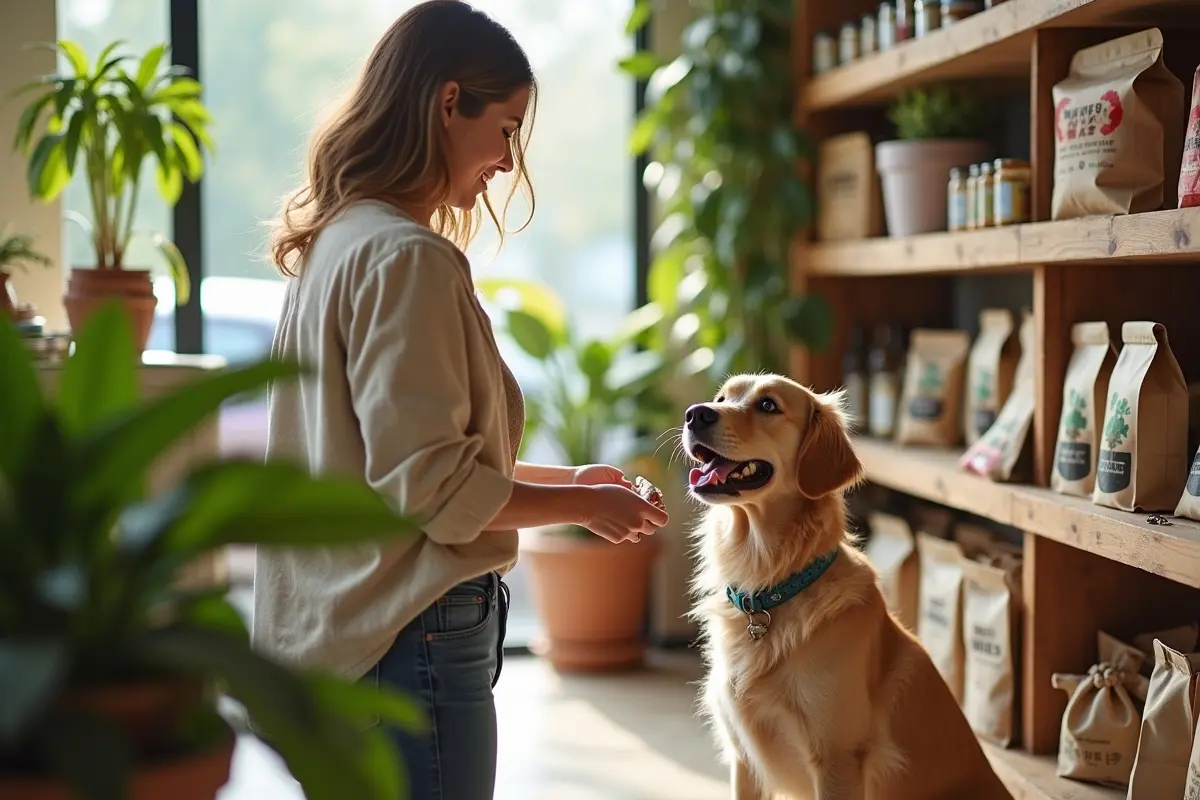Everyday Ways Pet Owners Can Reduce Their Environmental Pawprint
Pets bring a special kind of joy into our homes. They greet us with tail wags, cuddle into our sides, and have a talent for making each day feel a little bit softer. Along with that love comes responsibility, not just for their health and happiness but for the world they explore every day.
Caring for animals means caring for the planet they romp around on. The good news is that adjusting just a few daily habits can make a real difference for the environment.
This guide walks through simple, meaningful steps pet owners can take to shrink their environmental pawprint, without sacrificing comfort or fun for their furry companions.
Contents
Smarter Choices for Pet Food and Treats
Food is often the biggest environmental factor associated with pet care. A single dog or cat can consume a lot of protein annually, which means resource-heavy agricultural production.
Look for sustainable ingredients and responsible brands
Choosing food made with sustainable proteins, minimal fillers, and ethically sourced ingredients can reduce environmental strain while still supporting your pet’s nutrition.
Some more conscious brands use recyclable packaging or offer refill programs. If your pet has dietary flexibility, exploring options like plant-based treats or insect-protein snacks can be a playful eco-experiment.
Small swaps at mealtime add up. Even using up every last scoop before buying a fresh bag helps.
Keep food waste low
Only buy what you can store properly to avoid spoilage. If food goes stale, that’s wasted energy, transportation, and packaging. For pets with sensitive diets, ask your vet how to portion appropriately to keep leftover waste to a minimum.
Reducing Waste from Toys and Accessories
Pet toys are fun until they become landfill clutter. Cheap toys tend to break fast, and synthetic materials take ages to decay.
Choosing durable, washable items cuts down constant replacements. Natural fibers like hemp, wool, or cotton are gentler on the planet. When a toy gets destroyed, look for local recycling drop-offs or repair what you can.
Collars, leashes, and beds can be sourced from sustainable materials too. There is something satisfying about knowing your pet’s comfort doesn’t come at a heavy environmental cost.
Switch up the shopping mindset
Instead of impulsively grabbing novelty toys, create a rotation system so old favorites feel new again. Pets care about attention, not how trendy their gear looks.
You can even turn household scraps into enrichment games. A simple cardboard roll stuffed with a few treats becomes a puzzle that keeps pets thinking and reduces waste in one move.
Responsible Bathroom Habits
Nobody loves the cleanup part of pet parenthood, though responsible disposal matters more than people think.
Dog waste left outdoors can contaminate soil and waterways, contributing to harmful bacteria and excess nitrogen. Using biodegradable dog poop bags once daily doesn’t erase impact completely, though it beats sending regular plastic into landfills where it lingers for centuries.
Cat litter is part of the equation too. Some traditional clay-based litters rely on strip mining, which damages ecosystems. Switching to plant-based or wood-pellet options offers a more natural alternative with less environmental disruption.
Keep your disposal smart
Avoid flushing litter unless the product clearly says it is safe to do so. Composting is possible with the right equipment and caution, though never use composted pet waste for edible gardens.
Showers, Grooming, and the Water We Use
Bathing routines matter. Dogs dragged through muddy adventures obviously need more frequent washes, though many pets can stay healthy with carefully spaced baths.
Choose eco-friendly shampoos made from ingredients that won’t harm waterways. Brush regularly to reduce the need for bathing and heating gallons of water.
Professional groomers who use green products are out there, and supporting them encourages the pet-care industry to continue evolving sustainably.
Adopt, Don’t Shop, When Possible
Bringing home a rescue animal saves more than a life. It reduces demand for large-scale breeding operations that consume resources and often produce overpopulation problems in shelters.
Many shelters share your desire for sustainability and may offer spay-neuter support, microchipping, and other essentials that reduce medical waste later.
Choosing secondhand pet supplies when preparing for your new companion also helps cut down production and shipping impact.
Transportation and Outdoor Adventures
Car rides to parks and groomers are a treat for pets, though bundling errands or walking locally reduces emissions.
If you have a dog that loves long adventures, plan outings in nearby nature reserves instead of long-distance drives every week. The best memories are usually found close to home anyway.
Training good leash manners helps protect wildlife. Keeping dogs from chasing squirrels or birds preserves the balance of local ecosystems and keeps everyone safe.
Love the Planet Like Your Pets Do
Pets see the world with pure wonder. They sniff each leaf, nap in slivers of sunlight, and find magic in tiny details. Caring for them gives us the chance to see Earth with the same appreciation.
By feeding responsibly, reducing waste, embracing greener grooming, and choosing mindful outings, pet owners can play a heroic role in shaping a more sustainable future.
Every choice makes a difference. Each walk, each meal, each cozy bed becomes an opportunity to protect the places our pets love most.

